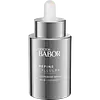What's inside
What's inside
 Key Ingredients
Key Ingredients

No key ingredients
 Benefits
Benefits

 Concerns
Concerns

No concerns
 Ingredients Side-by-side
Ingredients Side-by-side

Water
Skin ConditioningIsohexadecane
EmollientDipropylene Glycol
HumectantCaprylic/Capric/Myristic/Stearic Triglyceride
EmollientLauryl PEG-9 Polydimethylsiloxyethyl Dimethicone
Skin ConditioningSimmondsia Chinensis Seed Oil
EmollientButyrospermum Parkii Butter
Skin ConditioningDimethicone
EmollientGlycerin
HumectantOctyldodecyl Neopentanoate
EmollientSodium Chloride
MaskingIsostearic Acid
CleansingArginine/Lysine Polypeptide
Skin ConditioningPalmitoyl Tripeptide-5
Skin ConditioningAvena Sativa Kernel Extract
AbrasivePyrus Malus Seed Extract
Skin ConditioningBorago Officinalis Seed Oil
EmollientOenothera Biennis Oil
EmollientHydrogenated Coconut Oil
EmollientGardenia Taitensis Flower
Skin ConditioningLaminaria Digitata Extract
Skin ProtectingYeast Extract
Skin ConditioningGlucosamine Hcl
Cedrus Atlantica Bark Oil
MaskingCupressus Sempervirens Leaf/Stem Extract
Skin ConditioningEucalyptus Globulus Leaf Oil
PerfumingHelianthus Annuus Seed Oil
EmollientPelargonium Graveolens Flower Oil
MaskingAniba Rosodora Wood Oil
AstringentAbies Sibirica Oil
MaskingSantalum Album Oil
MaskingSodium Hyaluronate
HumectantTocopheryl Acetate
AntioxidantColloidal Oatmeal
AbsorbentMadecassoside
AntioxidantUrea
BufferingHexyldecanol
EmollientPolyglyceryl-4 Isostearate
EmulsifyingCetyl Dimethicone
EmollientHydrogenated Castor Oil
EmollientButylene Glycol
HumectantCaprylyl Glycol
EmollientEthylhexylglycerin
Skin ConditioningHexylene Glycol
EmulsifyingLinalool
PerfumingGeraniol
PerfumingCitronellol
PerfumingPhenoxyethanol
PreservativeWater, Isohexadecane, Dipropylene Glycol, Caprylic/Capric/Myristic/Stearic Triglyceride, Lauryl PEG-9 Polydimethylsiloxyethyl Dimethicone, Simmondsia Chinensis Seed Oil, Butyrospermum Parkii Butter, Dimethicone, Glycerin, Octyldodecyl Neopentanoate, Sodium Chloride, Isostearic Acid, Arginine/Lysine Polypeptide, Palmitoyl Tripeptide-5, Avena Sativa Kernel Extract, Pyrus Malus Seed Extract, Borago Officinalis Seed Oil, Oenothera Biennis Oil, Hydrogenated Coconut Oil, Gardenia Taitensis Flower, Laminaria Digitata Extract, Yeast Extract, Glucosamine Hcl, Cedrus Atlantica Bark Oil, Cupressus Sempervirens Leaf/Stem Extract, Eucalyptus Globulus Leaf Oil, Helianthus Annuus Seed Oil, Pelargonium Graveolens Flower Oil, Aniba Rosodora Wood Oil, Abies Sibirica Oil, Santalum Album Oil, Sodium Hyaluronate, Tocopheryl Acetate, Colloidal Oatmeal, Madecassoside, Urea, Hexyldecanol, Polyglyceryl-4 Isostearate, Cetyl Dimethicone, Hydrogenated Castor Oil, Butylene Glycol, Caprylyl Glycol, Ethylhexylglycerin, Hexylene Glycol, Linalool, Geraniol, Citronellol, Phenoxyethanol
Water
Skin ConditioningGlycerin
HumectantPentylene Glycol
Skin ConditioningButylene Glycol
HumectantPanthenol
Skin ConditioningPhenoxyethanol
PreservativeCentella Asiatica Leaf Extract
Skin ConditioningAesculus Hippocastanum Seed Extract
Skin ConditioningXanthan Gum
EmulsifyingCarbomer
Emulsion StabilisingEthylhexylglycerin
Skin ConditioningDisodium EDTA
Calendula Officinalis Flower Extract
MaskingAllantoin
Skin ConditioningSodium Hydroxide
BufferingCitric Acid
BufferingPantolactone
HumectantIngredients Explained
These ingredients are found in both products.
Ingredients higher up in an ingredient list are typically present in a larger amount.
Butylene Glycol (or BG) is used within cosmetic products for a few different reasons:
Overall, Butylene Glycol is a safe and well-rounded ingredient that works well with other ingredients.
Though this ingredient works well with most skin types, some people with sensitive skin may experience a reaction such as allergic rashes, closed comedones, or itchiness.
Learn more about Butylene GlycolEthylhexylglycerin (we can't pronounce this either) is commonly used as a preservative and skin softener. It is derived from glyceryl.
You might see Ethylhexylglycerin often paired with other preservatives such as phenoxyethanol. Ethylhexylglycerin has been found to increase the effectiveness of these other preservatives.
Glycerin is already naturally found in your skin. It helps moisturize and protect your skin.
A study from 2016 found glycerin to be more effective as a humectant than AHAs and hyaluronic acid.
As a humectant, it helps the skin stay hydrated by pulling moisture to your skin. The low molecular weight of glycerin allows it to pull moisture into the deeper layers of your skin.
Hydrated skin improves your skin barrier; Your skin barrier helps protect against irritants and bacteria.
Glycerin has also been found to have antimicrobial and antiviral properties. Due to these properties, glycerin is often used in wound and burn treatments.
In cosmetics, glycerin is usually derived from plants such as soybean or palm. However, it can also be sourced from animals, such as tallow or animal fat.
This ingredient is organic, colorless, odorless, and non-toxic.
Glycerin is the name for this ingredient in American English. British English uses Glycerol/Glycerine.
Learn more about GlycerinPhenoxyethanol is a preservative that has germicide, antimicrobial, and aromatic properties. Studies show that phenoxyethanol can prevent microbial growth. By itself, it has a scent that is similar to that of a rose.
It's often used in formulations along with Caprylyl Glycol to preserve the shelf life of products.
Water. It's the most common cosmetic ingredient of all. You'll usually see it at the top of ingredient lists, meaning that it makes up the largest part of the product.
So why is it so popular? Water most often acts as a solvent - this means that it helps dissolve other ingredients into the formulation.
You'll also recognize water as that liquid we all need to stay alive. If you see this, drink a glass of water. Stay hydrated!
Learn more about Water